One-of-a-Kind

When Tokyo Disneyland opened in 1983, it was an anomaly.
First and foremost, it’s neither owned nor operated by The Walt Disney Company. Instead, the Japanese park (the first international park bearing the Disney name) is wholly owned and operated by the Oriental Land Company (OLC), a Urayasu-based leisure and tourism corporation. OLC pays Disney to use character likenesses and royalties, somewhat like a franchisee! In return, Disney acts as a consultant and contracts out Disney Imagineers to design, develop, and install attractions.
As curious as the collaborative relationship may sound, it was the key to Tokyo Disneyland’s runaway success… That’s because OLC is the perfect “middle man” to connect the Disney brand to the Japanese people. For example, when Tokyo Disneyland was being designed in the late 1970s, OLC made it clear that they did not want Imagineers to integrate Japanese culture, customs, and stories into the park.
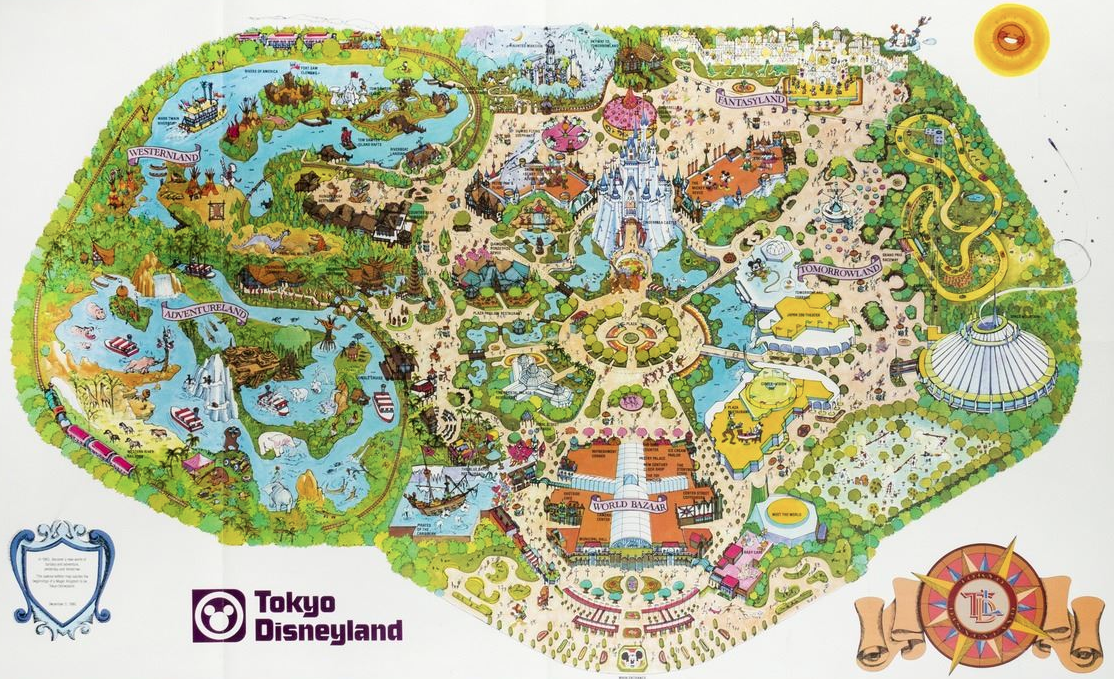
They didn’t want a Japanese-influenced Tomorrowland, or a Fantasyland of Japanese fables… Rather, they wanted the Magic Kingdom exactly as it existed in Florida, with all of the “Western” influences and stories in tact.
Although the idea might’ve boggled Disney executives and creatives, OLC was exactly right. Tokyo Disneyland is practically a clone of Magic Kingdom (with some big-budget diversions in the decades since opening) with all the “Americana” of a Main Street USA, the Space Race futurism of Tomorrowland, and even the cowboys and Indians of Frontierland. And the Japanese have overwhelmingly adopted the Disney brand as their own, regularly queuing hours to meet obscure characters, literally selling out gift shops each evening, and wearing Disney merchandise whether nine months or ninety-nine years old.

And – since OLC operates Tokyo Disney Resort with complete financial independence – the resort tends to feature no-holds-barred, no-costs-cut attractions, like the LPS-guided Pooh’s Hunny Hunt and the spectacular Monsters Inc.: Ride and Go Seek. OLC pulls out all the stops, funding the full-fledged, built-out versions of rides that American Disney fans can only dream of.
But they really pulled out all the stops in 2001…
Tokyo DisneySea

What can be said of Tokyo Disney Resort’s second theme park that hasn’t already? Tokyo DisneySea is a shining pinnacle of what Imagineering can create when the reigns are released. The same year that The Walt Disney Company debuted the underbuilt, underfunded, creatively-starved subject of our in-depth Declassified Disasters: Disney’s California Adventure, the Oriental Land Company revealed Tokyo DisneySea, a built-out, big-budget theme park that’s become the golden standard of themed entertainment design.
The nautically influenced park was built on reclaimed land on Tokyo Bay, giving the distinct impression that the park is sincerely set on the edge of an endless ocean.
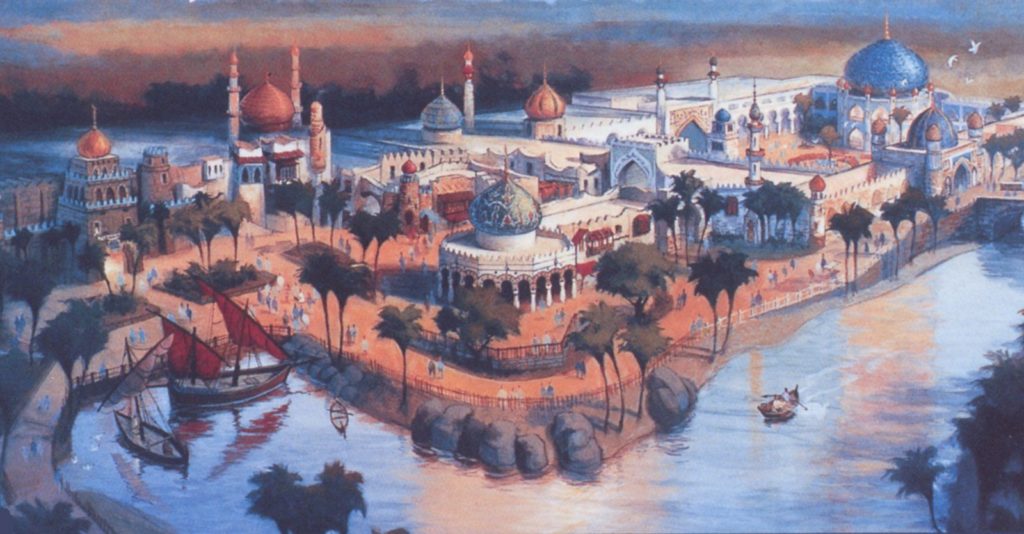
Its seven themed “ports” are so detailed, so complex, so massive in scale, and so well-designed, Tokyo DisneySea earns the distinction of being the kind of park you could spend a full day in, ride nothing, and still feel satisfied – the sought-after concept of “the park as the E-Ticket.” With the scope of Disneyland Paris, the scale of Magic Kingdom, the realism of World Showcase, and the budget of Shanghai Disneyland, DisneySea has become a veritable icon of themed entertainment; a Mecca for Disney Parks fans, topping their bucket lists and becoming a “must see.”

And even amid a custom-designed and big-budget Indiana Jones Adventure, the one-of-a-kind, Twilight Zone-free Modern Marvel: Tower of Terror, the unforgettable fan-favorite Sinbad’s Storybook Voyages, and a copy of Soarin’ absorbed into the in-universe story of S.E.A., it’s one particular adventure that rises above DisneySea’s many icons.
Telling a new story
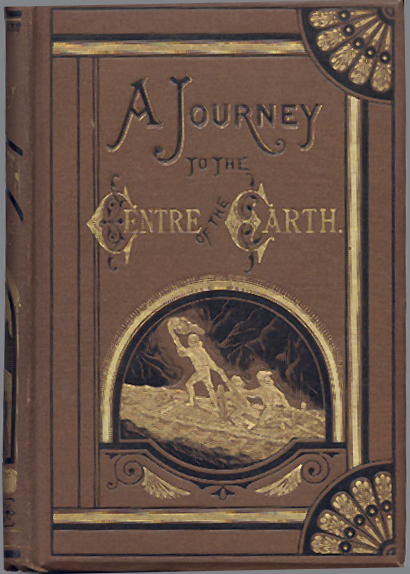
In the late 1990s, as Imagineers doubled down on their designs for Tokyo DisneySea and a Jules Verne themed land as the park’s centerpiece, the idea of a Journey to the Center of the Earth ride bubbled up again. They say good ideas never die at Disney, and we can be glad for that…
Imagineer Tom “Thor” Thordarson was given a blank slate, essentially told that DisneySea was going to house a ride themed to the Jules Verne story and asked to give executives “his take” on the concept. He was handed the Scott Sinclair plans crafted for the Disney-MGM Studios Backlot Tram Tour and told to use or scrap any parts of it in his plan.
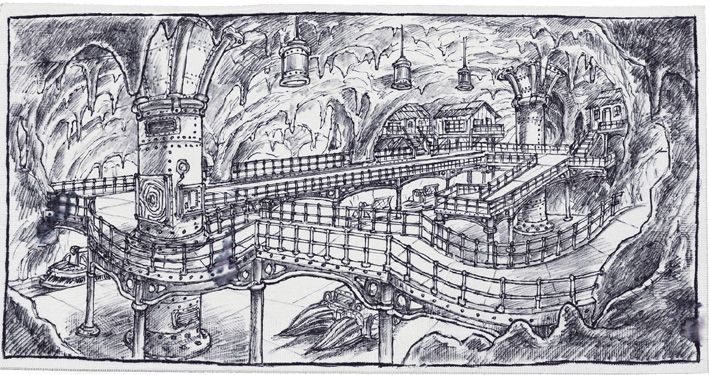
But rather than a passive behind-the-scenes encounter, DisneySea’s starring E-Ticket adventure would be an immersive, thrilling, wild descent into the planet’s core. And as usual, Disney Imagineers did their research. Thordarson and his peers visited caverns and caves across the country to get a better understanding of what a journey to the center of the Earth would really be like. “But I had to make all this bigger than life,” he reported to our friends at Disney and More. “I had to learn from real nature, but then project a sci-fi logic to the rest.”
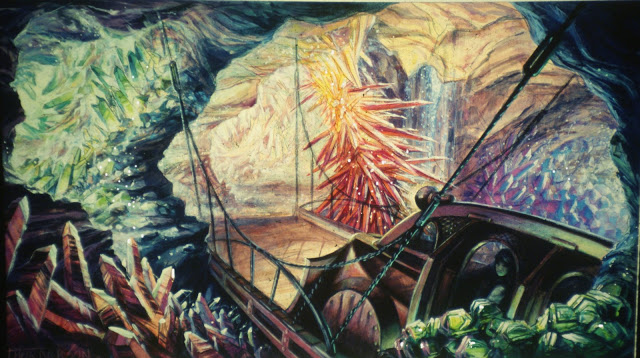
In fact, to create the immensely tight corridors and claustrophic chasms of the deep Earth, Thordarson made every detail count. He continued:
“I designed this “Vortex” of crystals as an idea where there was a “swirling energy” in the earth that caused these formations..like a magnetic tunnel. All the rock formations from the beginning to the end, I designed to have a psychological effect. In the beginning, the forms are friendly shapes like swirls and circles and crystals.
As we move into the more dangerous and dramatic areas, I designed the look to be sharper and actually look like the rock shapes are “pulling you” or forcing you towards the creature and out the volcano’s eruption. Again, when I design a ride or even just a painting, every form tells a story. Rock…seems simple but it is a stage and opportunity to tell a story…that can allow us to control our audience’s emotions, depending on how we stage it.”
But just as much heart went into the making of the ride’s living inhabitants – plants and animals living in deep earth habitats. Though many scenes created on the attraction would mirror Verne’s novel, the creatures of the bioluminscent mushroom forests deep beneath Earth’s crust were made by Imagineers, with Thordarson and his team not only sketching out those environments, but creating biological creatures adapted for it.
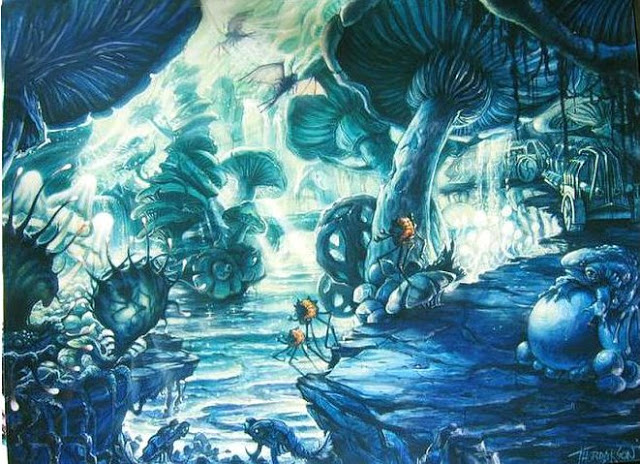
He told Disney and More:
I researched real glowing fungi and mushroom species. I created a world where light came from the natural bioluminescent mosses and plants, and the water was full of phosphorus plankton. […] The creatures were my creations that I believed could really have evolve. The team was VERY amused by the names I gave them like the “moss plucking skenk”, “flying nudibranch” and “leaping tri-pedal beetle”. You should have seen the figure animation department trying to say the names when they were building the creatures. The meetings were a real hoot! The creatures have parts that glow because..well, they eat the phosphorus and glowing vegetation, of course.”
But the most sought-after moment on this deep earth quest would be its finale: an encounter with a giant creature born of the roiling interior of the Earth.

“I liked a few elements from the studio tour but things like the creature being a worm was not as exciting for me. I wanted to be scientific in how I made this ride believable. The creature, in my mind was a prehistoric life form that, because we were in a lava tube peppered caldera of rock, had to look like it could have evolved to withstand incredible heat and yet move through tunnels with great speed.”
If you look at the first drawing of the lava creature, it is almost like a crustacean, hard exoskeleton amour to insulate it from the heat. However, it could swim out into the undersea tunnels too, to the open sea. Even when I deal with fantasy… I like to believe it could be possible in some way.”
After the pulse-pounding encounter, the ride would reveal its real trick – it would utilize the core ride system being developed for Epcot’s Lost Legend: Test Track. So while the ride would advance through dark ride scenes, climb inclines, and dip and twist through a convoluted layout crossing three separate stories, it would also be capable of great speed…
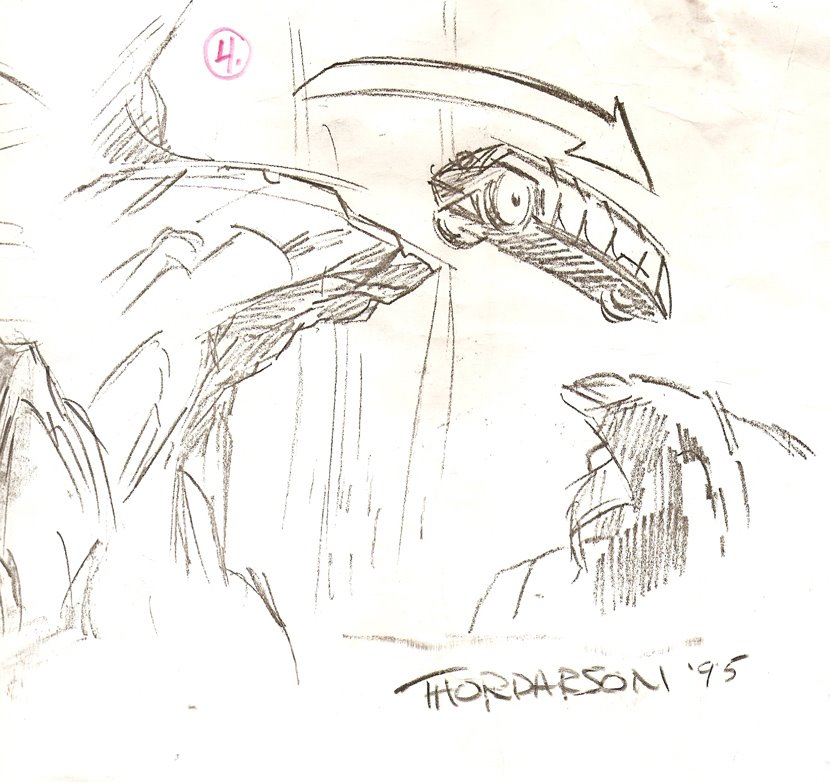
Are you ready to journey to the center of the Earth? The descent begins…



